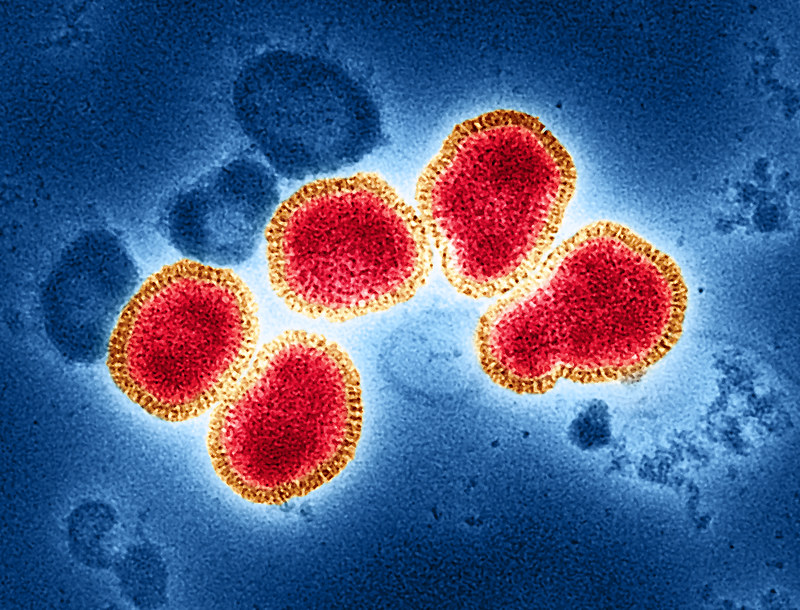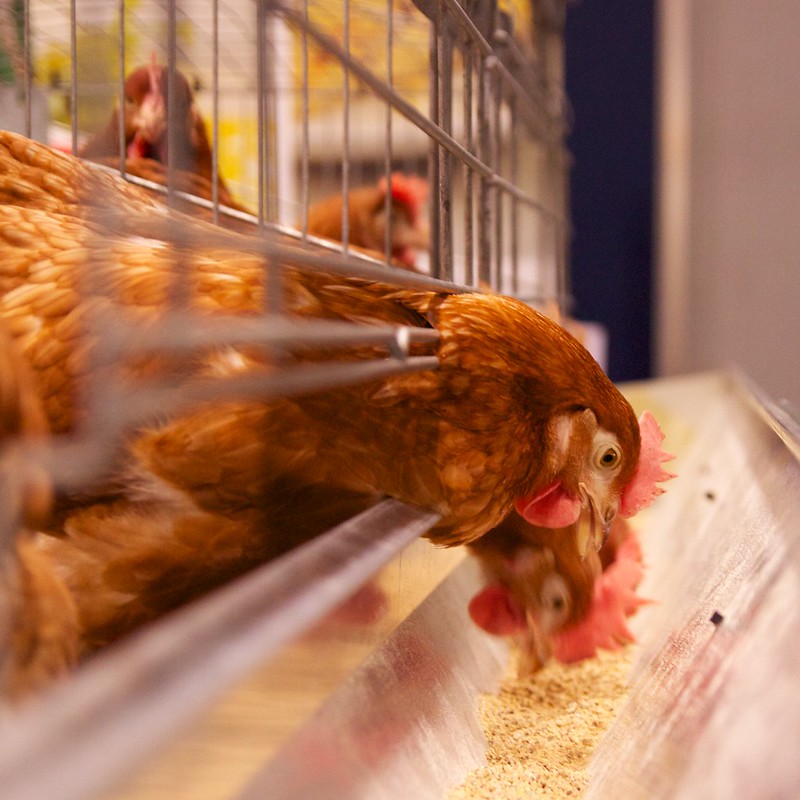- The US National Institutes of Health (NIH) recently announced the launch of a phase 1 clinical trial of a universal flu vaccine, which is sponsored by the National Institute of Allergy and Infectious Diseases (NIAID) and will take place at the NIH's Clinical Center in Bethesda. The vaccine candidate, called Flu-Mos-v2, is an adaptation of Flu-Mos-v1. Both were developed by NIAID researchers. Flu-Mos-v1 entered clinical trials in 2021. The newer version targets six strains, including four influenza A strains and two influenza B strains. The original version of the vaccine targets four flu strains.

- The University of Oxford's Pandemic Sciences Institute today announced the launch of a phase 1 clinical trial of a MERS-CoV vaccine. Currently, there are no vaccines or treatments for infections involving MERS-CoV (Middle East respiratory syndrome coronavirus). The vaccine uses a ChAdOx1 platform and has already been tested in young adults in the United Kingdom and Saudi Arabia. The new trial, the third involving the vaccine, is the first in older people. Vaccitech has acquired the commercial rights to the vaccine and is collaborating with Oxford and the Coalition for Epidemic Preparedness Innovations (CEPI) to develop the product.
- BioNTech and the Coalition for Epidemic Preparedness Innovations (CEPI) today announced the launch of a partnership to advance the development of an mRNA-based vaccine against mpox. The vaccine is part of a $90 million CEPI 100 Days Mission to support the development of mRNA vaccine candidates to address potential pandemic pathogens within 100 days of identifying the threat. Also, the program is part of BioNTech's plan to develop novel vaccines against diseases with large medical impacts, including those that disproportionately affect lower-income countries. The BioNTech mpox vaccine candidate, BNT166, encodes surface antigens against the two infectious forms of mpox. The phase 1/2 trial will enroll 196 healthy participants with and without a history of smallpox vaccination.
Quick takes: Universal flu vaccine trial launch, MERS vaccine trial in seniors, funds for mRNA mpox vaccine
COVID vaccination after long COVID may be linked to better outcomes
 A new observational study from Canadian researchers reveals that COVID vaccination after long COVID was tied to fewer symptoms, increased well-being, and less inflammation. The study, based on participants in Montreal, is published in the International Journal of Infectious Diseases.
A new observational study from Canadian researchers reveals that COVID vaccination after long COVID was tied to fewer symptoms, increased well-being, and less inflammation. The study, based on participants in Montreal, is published in the International Journal of Infectious Diseases.
Long COVID, or post-COVID condition (PCC), is a major emerging public health issue, as 10% to 30% of COVID-19 patients who are not hospitalized, and 50% to 70% hospitalized patients, experience an array of symptoms lasting more than 12 weeks after acute infection.
While vaccination may protect against severe disease and hospitalization, less is known about how vaccination after PCC diagnosis affects patients. In the present study, 83 participants previously infected with SARS-CoV-2 who were diagnosed as having PCC before COVID vaccination were followed for up to 24 months.
Participants were enrolled in the study from February 12 to September 8, 2021. Forty-four had not yet received a COVID-19 vaccine at the beginning of the study, while the remaining 39 had already received one or two doses.
Vaccination linked to lower cytokines
The five most common PCC symptoms reported at the beginning of the study were fatigue (81.9%), trouble with concentration (47.0%), trouble with memory (39.8%), headache (32.5%) and shortness of breath at rest (31.3%) during all follow-ups.
After vaccination, 77.8%, 7.4%, and 14.8% of participants reported improved, worsened and unchanged well-being scores, respectively, the authors said. And 86%, 8.3% and 5.6% of participants reported fewer, more, and the same number of PCC symptoms, respectively.
We observed a significant reduction in systemic inflammatory cytokine/chemokine levels post-vaccination, independent of number of vaccine doses received.
Sixteen cytokines and chemokines were significantly decreased after vaccination in participant blood samples, a sign that inflammatory proteins were mitigated by vaccination.
"High inflammatory cytokine/chemokine levels have been correlated with increased acute COVID-19 severity and poor prognosis," the authors concluded. "We observed a significant reduction in systemic inflammatory cytokine/chemokine levels post-vaccination, independent of number of vaccine doses received."
YouTube sent users to less relevant—not anti-vax—videos amid COVID, study suggests

Researchers from UN Global Pulse, the United Nations' innovation lab, uncover no strong evidence that the YouTube video-sharing platform promoted anti-vaccine content during the COVID-19 pandemic.
"However, the watch histories of users significantly affect video recommendations, suggesting that data from the application programming interface or from a clean browser do not offer an accurate picture of the recommendations that real users are seeing," the researchers wrote of the findings, published late last week in the Journal of Medical Internet Research.
The team asked World Health Organization (WHO)-trained participants and workers from the Amazon Mechanical Turk crowdsourcing tool to find an anti-vaccine video in the fewest clicks, starting from a WHO COVID-19 video. They compared the recommendations the users saw to related videos and recommended "up-next" videos seen through clean browsers without tracking software.
YouTube has stated its commitment to removing content that contains misinformation on vaccination. Nevertheless, such claims are difficult to audit.
Using machine-learning methods, the researchers then identified anti-vaccine content among 27,074 video recommendations.
Promoted anti-vaccine content stayed under 6%
There was no evidence that YouTube funneled users toward anti-vaccine content, with the average proportion of such videos staying below 6%. Instead, YouTube's algorithms pointed users to non–vaccine-related health content.
"The videos that users were directed to were longer and contained more popular content, and attempted to push a blockbuster strategy to engage users by promoting other reliably successful content across the platform," lead author Margaret Yee Man Ng, PhD, said in a University of Illinois at Urbana-Champaign (UIUC) news release. Ng is also a journalism professor at UIUC.
The authors noted that there have been significant concerns about the contribution of social media to vaccine hesitancy throughout the pandemic. For example, Facebook removed some COVID-19 misinformation starting in 2020, but a recent study revealed that users just found other ways to access and spread it.
"YouTube has stated its commitment to removing content that contains misinformation on vaccination," the researchers wrote. "Nevertheless, such claims are difficult to audit. There is a need for more empirical research to evaluate the actual prevalence of antivaccine sentiment on the internet."
South Africa battles high-path H7N6 avian flu in poultry
Outbreaks of highly pathogenic H7N6 avian flu that began at the end of May have led to the loss of about a quarter of South Africa's poultry, with layer farms hit hardest, according to a poultry industry official quoted in a South African agriculture publication.
According to the World Organization for Animal Health (WOAH), the first outbreak began on May 29 in Mpumalanga province in the eastern part of the country. The outbreaks have spread to farms in four other provinces: Gauteng, Free State, Limpopo, and Northwest.

Shahn Bisschop, DVM, who heads Avimune, a poultry veterinary service in South Africa, told media outlets that the H7N6 strain—new to the country—appears to be far more contagious than the H5N1 virus spreading in the rest of the world. He said South Africa is already experiencing egg shortages and may start to face meat shortages within 4 to 6 weeks.
Animal health officials aren't sure if the onset of warmer weather during the Southern Hemisphere's summer season will slow the spread of the virus, and discussions are under way about emergency use of a vaccine to help the poultry industry recover.
Genomic analysis uncovers syphilis transmission networks in England
A study by scientists in the United Kingdom provides some new insight into how syphilis—including antibiotic-resistant strains—is spreading in England.
The findings, published late last week in The Lancet Microbe by researchers with the UK Health Security Agency and the Wellcome Trust Sanger Institute, come amid an uptick in syphilis cases in England, which has seen infectious syphilis diagnoses more than triple since 2010. UK health officials believe the rise in syphilis cases reflects both increased testing and transmission, particularly among men who have sex with men (MSM).
In the study, researchers performed whole-genome sequencing (WGS) of samples of Treponema pallidum, the bacterium that causes syphilis, collected from across England from January 2012 through October 2018. Of the 237 genomes that were sequenced, 180 (76%) were from MSM, and about half (118, 49.8%) were from London. Roughly 90% of the genomes contained mutations conferring resistance to macrolide antibiotics.
Discrete clusters associated with sexual behavior
Phylogenomic analysis and clustering revealed two dominant T pallidum sublineages in England: sublineage 1, which was found throughout England and across all patient groups, and sublineage 14, which was found predominantly in MSM ages 34 and older in and around London, with no cases found in the northern regions of England. Further analysis revealed several instances representing discrete heterosexual transmission networks or clusters.
"Our identification of discrete clusters associated with sexual behaviour suggests WGS combined with detailed epidemiological data can resolve some local transmission chains for T pallidum," the study authors wrote. "This could offer opportunities to intervene or educate sexual networks, and to determine or exclude outbreak membership."
Our identification of discrete clusters associated with sexual behaviour suggests WGS combined with detailed epidemiological data can resolve some local transmission chains for T pallidum
The authors say the study demonstrates how genomic surveillance can help with efforts to address the spread of sexually transmitted infections (STIs).
"While its use will need to be investigated further, genomic surveillance could provide a step change in our ability to understand and inform surveillance, prevention, and treatment strategies for a broad range of STIs," senior study author Nicolas Thomson, PhD, said in a press release.










